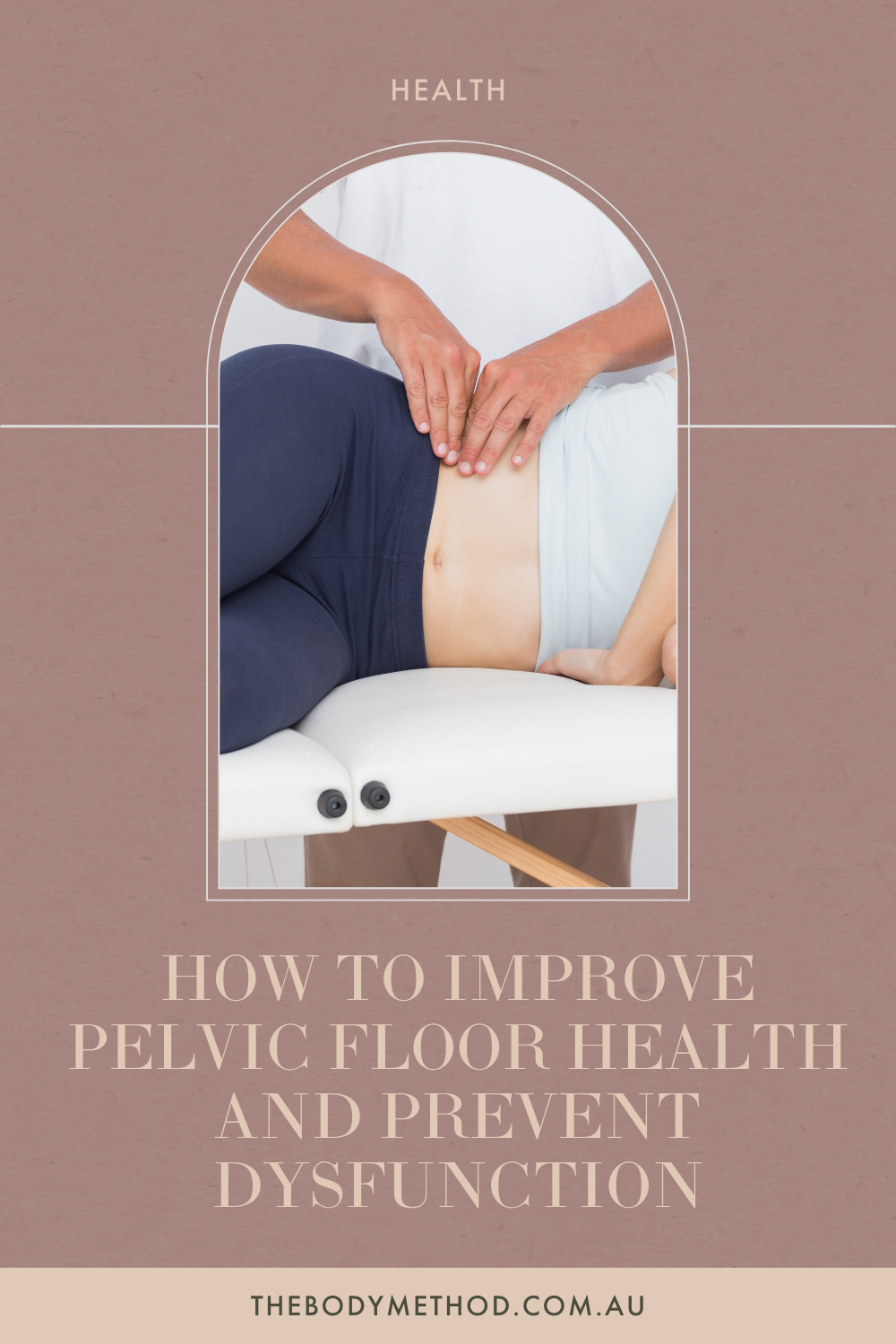How to Improve Pelvic Floor Health and Prevent Dysfunction
Your pelvic floor, although often overlooked, is essential for maintaining various bodily functions. This network of muscles and tissues spanning from the pubic bone to the tailbone and laterally to the hip bones, plays a crucial role in supporting pelvic organs and controlling muscle contractions. In this blog post, we delve into the intricacies of the pelvic floor, exploring its anatomy, what can cause issues to arise, and what you can do to help address any pelvic floor dysfunction. Let's embark on a journey to demystify this often-neglected part of the body and explore how pelvic floor exercises can contribute to overall health.
What is your pelvic floor?
Your pelvic floor is a group of muscles that connects from your pubic bone to your tailbone and laterally to the iliac crest of your hip bones. The muscles and tissues of the pelvic floor are important for controlling the ability to contract and relax the muscles in this area, and prevent pelvic organs, such as the uterus, bladder and bowel from prolapsing.
Take a look at this video, from The Body Method’s resident Osteopath, Dr. Kira Nee of Tugun Osteopathy, who explains the anatomy of the pelvic floor, how to connect and become more familiar with your pelvic floor.
How Pelvic Floor Muscles Develop Dysfunction
Although we often talk about strengthening the pelvic floor, dysfunction can occur when the pelvic floor is either too weak, or is not relaxed enough. Here are some common ways that dysfunction can develop in your pelvic floor muscles.
Pregnancy and Childbirth
The process of pregnancy and childbirth can put significant strain on the pelvic floor muscles. Hormonal changes during pregnancy can also affect the connective tissues in the pelvic area.
Ageing
As people age, the muscles in the pelvic floor may naturally weaken. This can lead to issues such as urinary incontinence or pelvic organ prolapse.
Hormonal Changes
Changes in hormonal levels, especially during menopause, can affect the strength and elasticity of pelvic floor tissues.
Obesity
Excess body weight can put additional pressure on the pelvic floor muscles, potentially leading to weakness over time.
Chronic Constipation
Straining during bowel movements over a long period can stress the pelvic floor muscles and contribute to their weakening.
Heavy Lifting
Regularly lifting heavy objects, especially without proper form, can strain the pelvic floor muscles and contribute to weakness.
High-Impact Activities
Certain high-impact exercises or activities, such as running or jumping, may impact the pelvic floor muscles and lead to weakness.
Chronic Coughing
Conditions such as chronic coughing, often associated with smoking or respiratory issues, can strain the pelvic floor muscles.
Shallow Breathing
Quick, shallow breathing prevents your pelvic floor from fully relaxing. This can cause increased tightness and weakness and, over time, lead to issues like urinary leakage and prolapse.
Genetic Factors
Some individuals may be genetically predisposed to pelvic floor issues, including weakness.
Sedentary Lifestyle
Lack of physical activity and a sedentary lifestyle can contribute to overall muscle weakness, including the pelvic floor muscles.
It's important to note that these factors can often interact, and a combination of them may contribute to pelvic floor muscle weakness.
How can you treat pelvic floor dysfunction?
As there are many factors that could potentially contribute to the development of pelvic floor dysfunction, it’s important to consult with a pelvic healthcare professional for appropriate diagnosis and guidance on your individual circumstances.
Maintaining a healthy lifestyle, including regular exercise, a balanced diet, and proper weight management, can help support pelvic floor health. Here are a few other tools that can be useful in both preventing and reversing the symptoms of pelvic floor dysfunction.
Pelvic Floor Exercises
Pelvic floor exercises, often referred to as Kegels. These targeted exercises improve the strength and coordination of the pelvic floor muscles, improves circulation to the area, brings awareness to the area and can help support the pelvic organs, leading to a reduction or prevention of prolapsed organs.
Pelvic Floor Physical Therapy
A physical therapist, such as a physiotherapist or osteopath with specialised training, can work with individuals to strengthen and coordinate the pelvic floor muscles. This may involve exercises such as Kegel exercises, biofeedback, and manual therapy techniques.
Behavioural and Lifestyle Modifications
Making changes in lifestyle and behaviour can often help manage symptoms. Adopting a healthy lifestyle, including regular exercise, a balanced diet, maintaining a healthy weight and proper hydration, can contribute to overall pelvic floor health.
Biofeedback
This technique involves using electronic monitoring to provide visual or auditory feedback about muscle activity. It can help individuals learn to control and strengthen their pelvic floor muscles.
Medications
In some cases, medications or natural remedies may be prescribed to manage specific symptoms. For example, medications can be used to treat overactive bladder or address constipation issues.
Relaxation Techniques
Techniques such as deep breathing, yoga, or meditation can help relax the pelvic floor muscles and alleviate tension.
Surgical Interventions
In cases where conservative treatments are not effective, surgical options may be considered. Surgical procedures can address issues such as pelvic organ prolapse or stress urinary incontinence.
From the strains of pregnancy to the impacts of a sedentary lifestyle, various factors can contribute to pelvic floor muscle weakness. Fortunately, there are effective ways to address pelvic floor dysfunction. Whether through targeted exercises, professional physical therapy, lifestyle modifications, or even surgical interventions in severe cases, a tailored approach can make a significant difference. As we navigate the intricate balance of pelvic health, it becomes evident that consulting with a pelvic healthcare professional is key. By embracing a holistic approach, including regular exercise, a balanced diet, and weight management, we empower ourselves to support and maintain the health of our pelvic floor. It's time to prioritise this essential part of our well-being and take proactive steps toward pelvic floor health.

